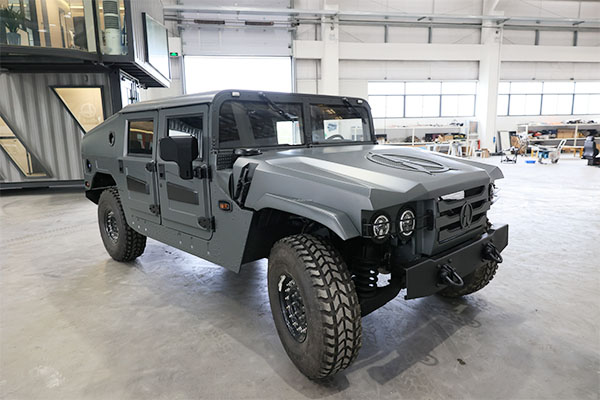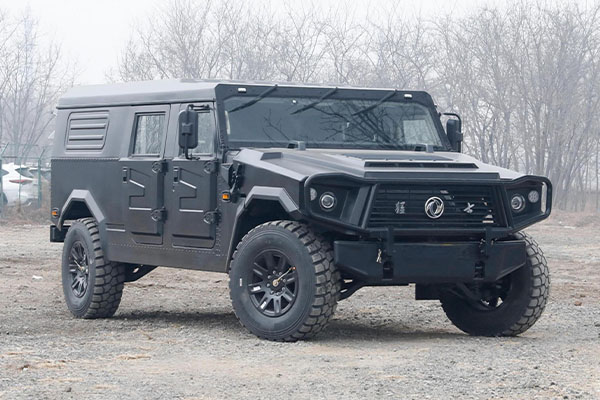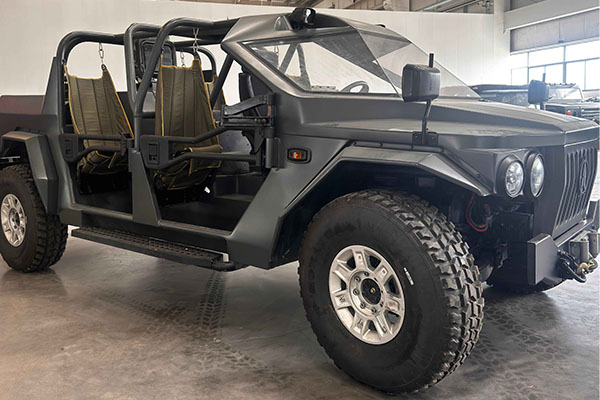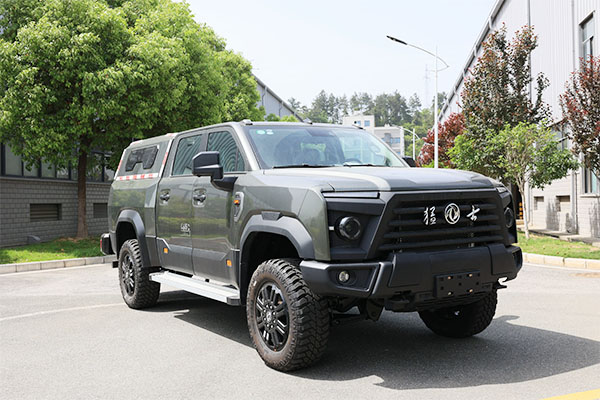How can an off-road modified vehicle increase its interior space without sacrificing performance?
Release Time : 2025-06-09
While pursuing extreme performance, how can an off-road modified vehicle cleverly increase its interior space without sacrificing its excellent off-road capabilities? This has become a major challenge for designers. This problem is gradually being solved through innovative design concepts and advanced engineering technologies.
First of all, optimizing the chassis structure is one of the key steps to achieve this goal. Modern off-road modified vehicles usually use high-strength lightweight materials to build the chassis, which not only improves the overall rigidity of the vehicle, but also reduces the weight of the body, providing the possibility of expanding the interior space. At the same time, engineers pay attention to the effective use of every inch of space during the design process, such as re-arranging the position of the transmission system and suspension components, so that the space originally occupied by these mechanical components can be released, thereby increasing the available area of the passenger compartment and storage space. This approach not only ensures that the basic performance of the vehicle is not affected, but also significantly improves the comfort and cargo capacity of passengers.
Secondly, innovation in interior design is also an important way to increase interior space. Traditional off-road vehicle interiors often emphasize durability and ignore space utilization. Today, designers pay more attention to versatility and flexibility. For example, seats can be adjusted flexibly or even folded completely to create more variable cargo space. In addition, the use of embedded or hidden storage compartments can effectively utilize previously underutilized space such as under the seats and inside the door panels to provide additional storage options. These improvements not only increase practicality, but also make the interior environment look neater and more orderly.
Furthermore, the use of modular design concepts is also crucial to improving the interior space. Modular design allows components with different configurations to be quickly replaced or adjusted according to user needs, such as removable rear seats and mobile center consoles. This means that car owners can flexibly change the interior layout according to actual needs, whether it is a long-distance trip or daily commuting, they can find the most suitable space solution for themselves. More importantly, this design method will not have any negative impact on the vehicle's original power system, suspension system and other core components, ensuring the complete retention of off-road performance.
In addition, the use of panoramic sunroofs or large roof glass also brings a more open sense of space to the interior. Although this does not directly increase the physical volume, the visual extension effect can greatly improve the psychological feelings of passengers. Through the transparent roof, passengers can enjoy the pleasant experience brought by natural light and better appreciate the scenery along the way. This plays an important role in improving the comfort of long-distance driving.
It is worth noting that the advancement of technology has also provided new possibilities for the space optimization of off-road modified vehicles. For example, intelligent control systems can help automatically adjust functions such as seat position and air-conditioning outlet direction, thereby maximizing the use of limited space resources. In addition, the application of some new materials has also made the car wall panels thinner and stronger, further expanding the internal use area.
Finally, in order to ensure that the interior space is increased without sacrificing performance, manufacturers also need to conduct comprehensive and detailed testing and evaluation. From the initial concept design to the final product finalization, every link needs to undergo strict quality inspection. Only in this way can we ensure that every off-road modified vehicle shipped can meet the user's demand for more space while maintaining excellent off-road performance.
In summary, the off-road modified vehicle has successfully achieved an increase in interior space without sacrificing performance through a variety of means such as optimizing the chassis structure, innovating the interior design, adopting modular concepts, and introducing high-tech elements. This not only greatly improves the user's driving experience, but also provides more diverse choices for off-road enthusiasts. In the future, with the continuous development of technology, I believe there will be more surprising designs, bringing people unprecedented travel fun.
First of all, optimizing the chassis structure is one of the key steps to achieve this goal. Modern off-road modified vehicles usually use high-strength lightweight materials to build the chassis, which not only improves the overall rigidity of the vehicle, but also reduces the weight of the body, providing the possibility of expanding the interior space. At the same time, engineers pay attention to the effective use of every inch of space during the design process, such as re-arranging the position of the transmission system and suspension components, so that the space originally occupied by these mechanical components can be released, thereby increasing the available area of the passenger compartment and storage space. This approach not only ensures that the basic performance of the vehicle is not affected, but also significantly improves the comfort and cargo capacity of passengers.
Secondly, innovation in interior design is also an important way to increase interior space. Traditional off-road vehicle interiors often emphasize durability and ignore space utilization. Today, designers pay more attention to versatility and flexibility. For example, seats can be adjusted flexibly or even folded completely to create more variable cargo space. In addition, the use of embedded or hidden storage compartments can effectively utilize previously underutilized space such as under the seats and inside the door panels to provide additional storage options. These improvements not only increase practicality, but also make the interior environment look neater and more orderly.
Furthermore, the use of modular design concepts is also crucial to improving the interior space. Modular design allows components with different configurations to be quickly replaced or adjusted according to user needs, such as removable rear seats and mobile center consoles. This means that car owners can flexibly change the interior layout according to actual needs, whether it is a long-distance trip or daily commuting, they can find the most suitable space solution for themselves. More importantly, this design method will not have any negative impact on the vehicle's original power system, suspension system and other core components, ensuring the complete retention of off-road performance.
In addition, the use of panoramic sunroofs or large roof glass also brings a more open sense of space to the interior. Although this does not directly increase the physical volume, the visual extension effect can greatly improve the psychological feelings of passengers. Through the transparent roof, passengers can enjoy the pleasant experience brought by natural light and better appreciate the scenery along the way. This plays an important role in improving the comfort of long-distance driving.
It is worth noting that the advancement of technology has also provided new possibilities for the space optimization of off-road modified vehicles. For example, intelligent control systems can help automatically adjust functions such as seat position and air-conditioning outlet direction, thereby maximizing the use of limited space resources. In addition, the application of some new materials has also made the car wall panels thinner and stronger, further expanding the internal use area.
Finally, in order to ensure that the interior space is increased without sacrificing performance, manufacturers also need to conduct comprehensive and detailed testing and evaluation. From the initial concept design to the final product finalization, every link needs to undergo strict quality inspection. Only in this way can we ensure that every off-road modified vehicle shipped can meet the user's demand for more space while maintaining excellent off-road performance.
In summary, the off-road modified vehicle has successfully achieved an increase in interior space without sacrificing performance through a variety of means such as optimizing the chassis structure, innovating the interior design, adopting modular concepts, and introducing high-tech elements. This not only greatly improves the user's driving experience, but also provides more diverse choices for off-road enthusiasts. In the future, with the continuous development of technology, I believe there will be more surprising designs, bringing people unprecedented travel fun.







